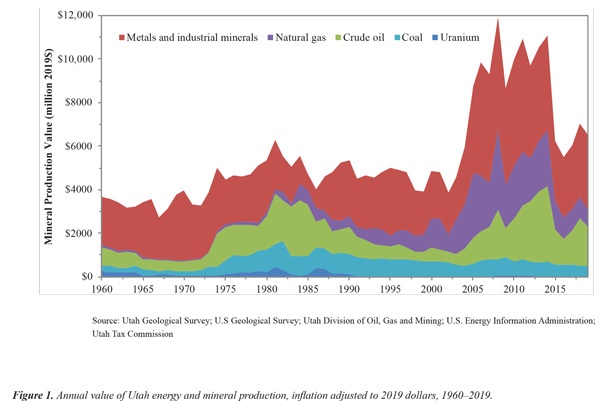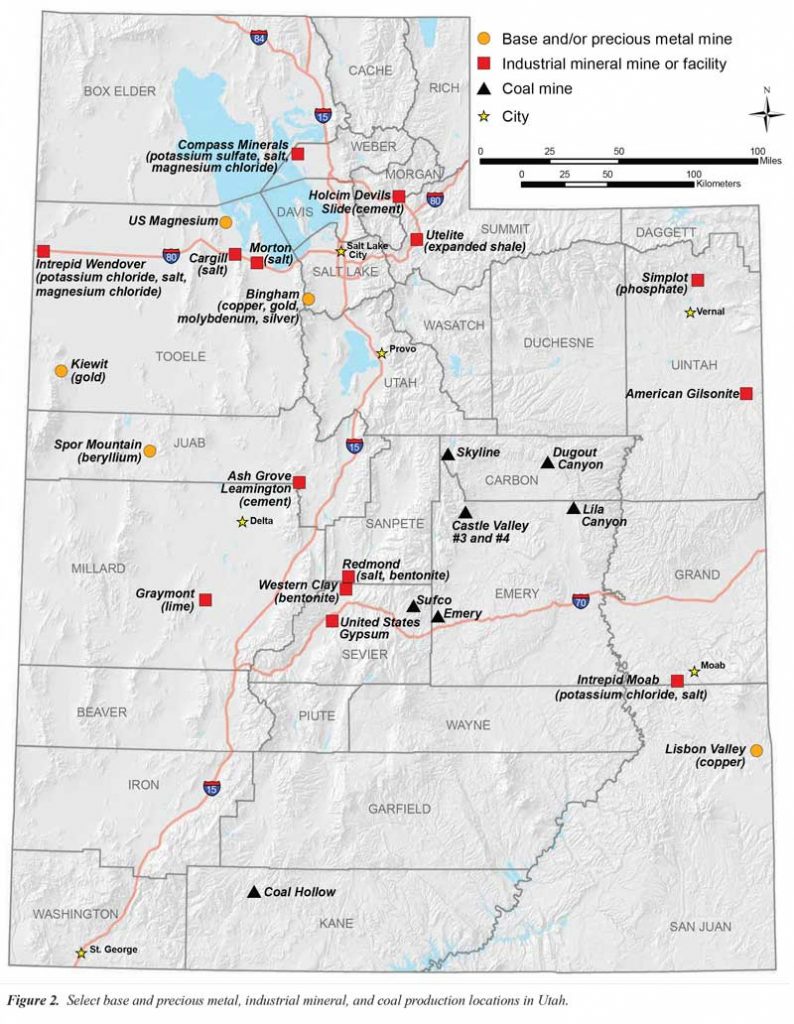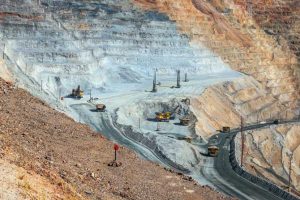By Stephanie E. Mills, Andrew Rupke, Michael D. Vanden Berg, and Taylor Boden

2019 UTAH MINING INDUSTRY SUMMARY
The estimated combined value of Utah’s extractive resource production in 2019 totaled $6.5 billion, including production of metals and industrial minerals ($3.5 billion), natural gas ($760 million), crude oil ($1.8 billion), and coal ($480 million) (figure 1). Utah’s diverse mining industry accounted for $3.9 billion (61%) of total extractive resource production, an increase of $92 million (2.4%) from 2018, but 26% lower than peak values reached in 2011 ($5.3 billion, nominal dollars). Mining activities in Utah currently produce base metals, precious metals, industrial minerals, and coal (figure 2). Base metal production contributed $1.8 billion and includes copper, magnesium, beryllium, and molybdenum. Notably, copper accounts for 67% ($1.2 billion) of Utah’s base metal production value (figure 3). Precious metals produced in Utah include gold and silver, and 2019 production was valued at $375 million (figure 3). Precious metal production value increased by about 29% from 2018 to 2019, but base metal values decreased about 3%. Utah also produced several industrial mineral commodities including sand and gravel, crushed stone, salt, potash, cement, lime, phosphate, gilsonite, clay, gypsum, and others (figure 2). The estimated value of industrial mineral production in 2019 was $1.3 billion, a 6% increase over the revised 2018 estimate (figure 3). The most valuable industrial mineral group in 2019, estimated at $483 million, was the brine and evaporite derived commodities of potash, salt, and magnesium chloride. In contrast to other minable commodities, the value of Utah coal production again decreased in 2019 to $480 million, down from $499 million in 2018 (figure 3). Notably, Utah remains the only state to produce magnesium metal, beryllium concentrate, potassium sulfate, and gilsonite; of these mineral commodities, magnesium, beryllium, and potash (includes potassium sulfate) are included in the U.S. Department of the Interior’s 2018 list of critical minerals (Fortier and others, 2018).
Historically, Utah has been a significant producer of iron, uranium, and vanadium, but production of these commodities has been suspended due to low prices or exhausted reserves. Energy Fuels Resources operates the White Mesa uranium vanadium mill in San Juan County, which has continued to produce uranium from alternative feeds (material not sourced from Energy Fuels’ mines) since the suspension of mining in 2012. In 2019, the mill for the first time since 2008 did not produce any uranium, as it transitioned to producing vanadium from pond tailings. Uranium production at the mill from alternate feeds is set to restart in 2020.
To see the full article scan here: https://ugspub.nr.utah.gov/publications/circular/c-130.pdf














